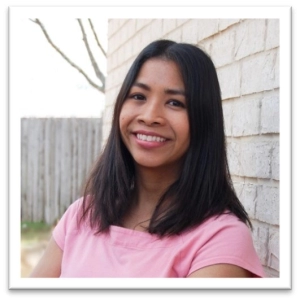The COVID-19 pandemic presented challenges in how our Healthcare-Associated Infections and Antimicrobial-Resistant Pathogens (HAI/AR) Program provides support to long-term care facilities (LTCF) experiencing outbreaks. As the pandemic unfolded, we quickly realized the need to increase our infection prevention capacity. We sought out support from leadership and partners to modify our staffing structures in order to provide continued quality and focused support to our healthcare facilities.
The Texas Department of State Health Services (DSHS) is divided into 8 public health regions, with 64 local health departments that operate at the county or city level. Texas has approximately 4,000 licensed nursing facilities, assisted living facilities, and group homes including 1,200 Centers for Medicare & Medicaid Services (CMS)-certified nursing homes, across 254 counties. Traditionally, one HAI Epidemiologist is assigned to each public health region to lead and support HAI outbreak response activities, including providing direct assistance and on-site infection control assessments to healthcare facilities. The Texas Department of State Health Services (DSHS) is divided into 8 public health regions, with 64 local health departments that operate at the county or city level. Texas has approximately 4,000 licensed nursing facilities, assisted living facilities, and group homes including 1,200 Centers for Medicare & Medicaid Services (CMS)-certified nursing homes, across 254 counties. Traditionally, one HAI Epidemiologist is assigned to each public health region to lead and support HAI outbreak response activities, including providing direct assistance and on-site infection control assessments to healthcare facilities.
This structure worked for our team until the onset of the COVID-19 pandemic when it became evident that one HAI Epidemiologist per public health region was insufficient to support the surge in COVID-19 cases. So, we explored the options of increasing infection prevention staff at our public health regions to build capacity for our COVID-19 response.
We received approval and support to build staffing capacity from DSHS leadership, and they provided us with the resources to contract with 3 Infection Preventionists per public health region, for a total of 24 additional Infection Preventionists throughout the state. The real challenge, however, was finding certified Infection Preventionists to recruit. At that time, healthcare facilities and local health departments were also in the process of recruiting Infection Preventionists, so we were competing for contractors in a limited pool. We decided to partner with the Association for Professionals in Infection Control and Epidemiology (APIC) who aided with the recruitment process. Out of the 24 Infection Preventionists we sought to recruit, we were able to contract with 17. These additional Infection Preventionists were instrumental in building our capacity during the response. They performed on-site infection control assessments and provided dedicated support to meet the needs of facilities.
From the first quarter of 2021, we started seeing a decrease in the number of requests for assistance from our regulatory partners and healthcare facilities, and as a result, we reduced the number of APIC contractors. It was important for us to still maintain a reasonable number of staff to assist with the continued pandemic, so we currently have at least one contracted Infection Preventionist in each public health region to assist the assigned HAI Epidemiologist with outbreak response activities.
Coordinating with the Texas Health and Human Services Commission (HHSC)—our regulatory branch—and utilizing established communication pathways facilitated the coordination of our response activities. We held daily meetings with HHSC, DSHS, and the Division of Emergency Management’s State Operations Center (SOC), where all communication plans and guidance were developed for dissemination to facilities by HHSC.
Thanks to the support of DSHS leadership and partners, as well as the dedication of our team, we worked together in a coordinated fashion to build capacity and respond to COVID-19 outbreaks in healthcare facilities.

Enyinnaya Merengwa, Healthcare Safety Investigations Group Manager and State HAI Coordinator at the Texas Department of State Health Services

Thi Dang, HAI Epidemiologist at the Texas Department of State Health Services